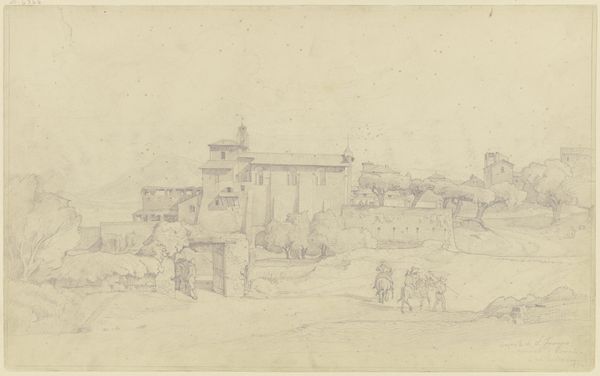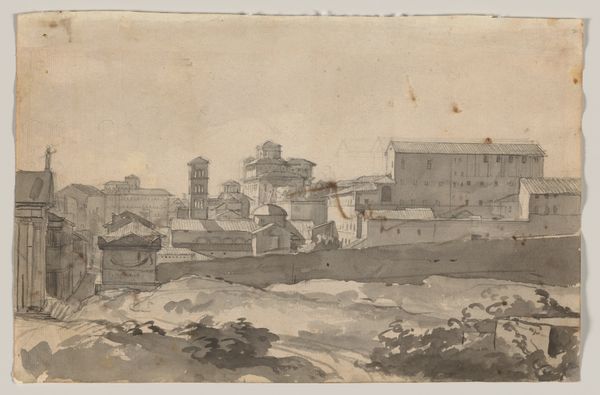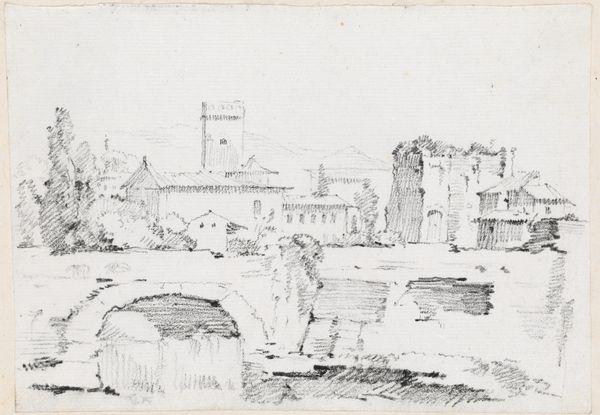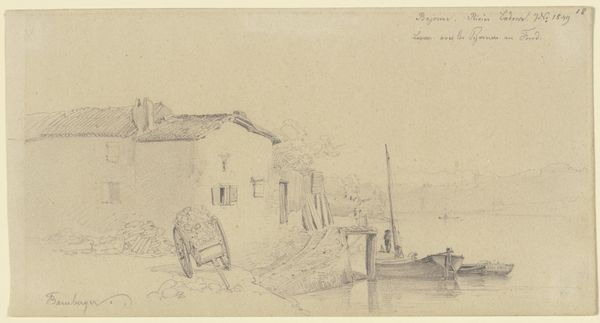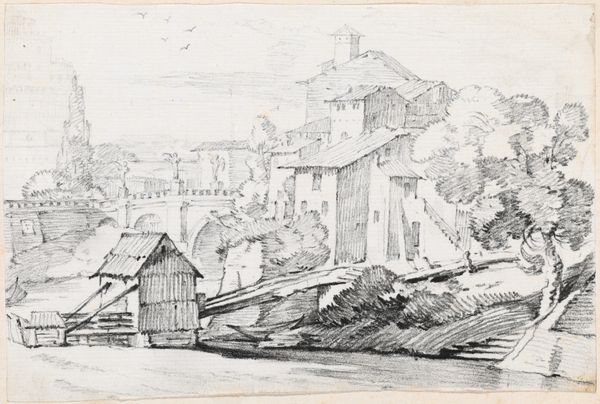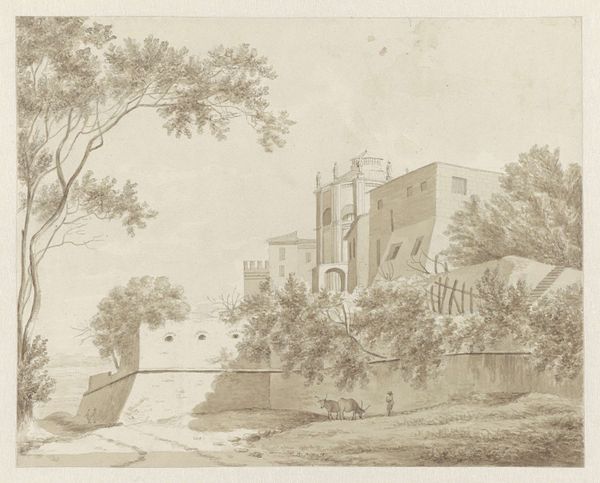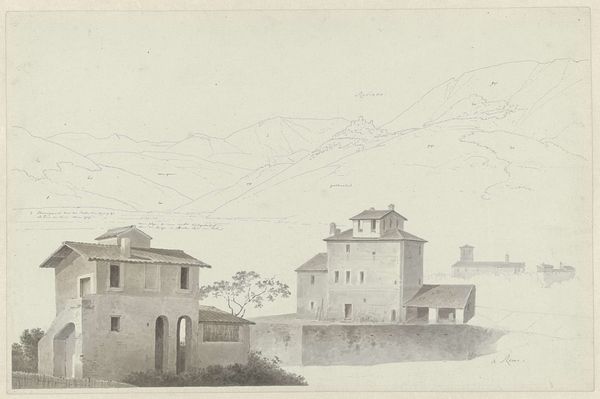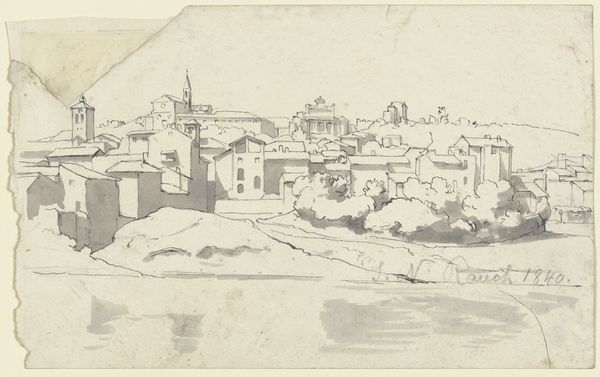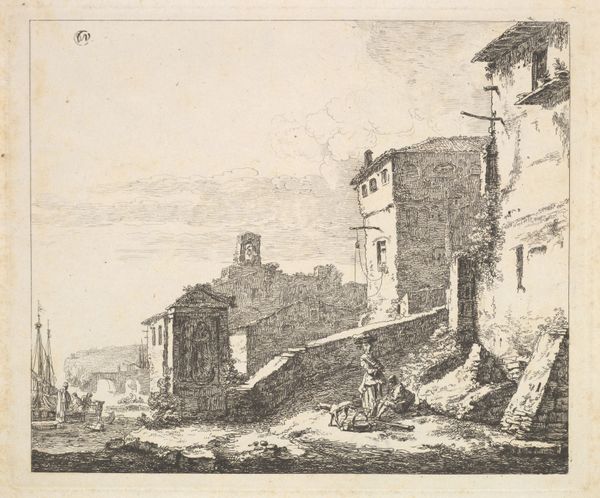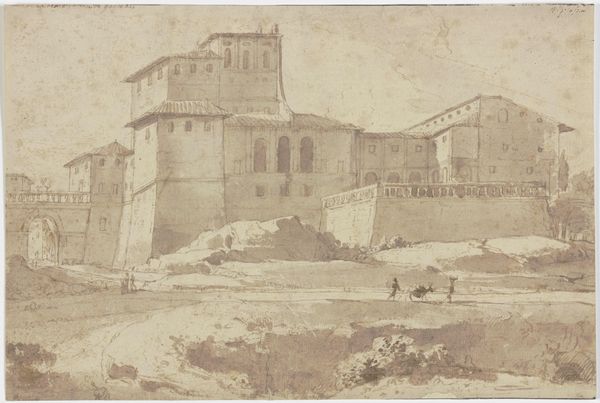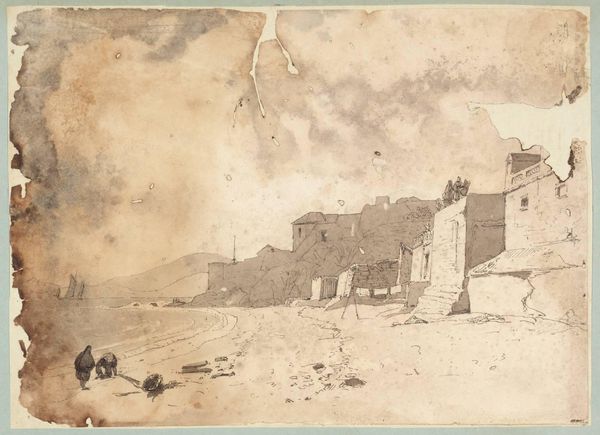
drawing, painting, ink, architecture
#
drawing
#
netherlandish
#
baroque
#
painting
#
pencil sketch
#
landscape
#
etching
#
ink
#
architecture
Copyright: Public Domain
Jan Asselijn created this drawing of `t Tolhuijs on the Tiber' with pen and brush in grey ink, on paper, sometime in the mid-17th century. The scene depicts the ancient Roman customs house on the banks of the Tiber river and it resonates with the rise of Dutch Italianate landscape painting. The image creates meaning through visual codes; the classical architecture would have been familiar to Asselijn's Dutch contemporaries who would often travel to Italy as part of their artistic education. The customs house represents the economic and political power of Rome at the time. The serene composition and muted color palette evoke a sense of tranquility. In 17th century Netherlands, the art market was booming, and artists were catering to the tastes of a wealthy merchant class eager to display their cosmopolitanism and worldly knowledge. Historians use sources such as travel journals, art market records, and biographical accounts to understand better the social and institutional contexts that shaped the production and reception of such works. The meaning of art is contingent on social and institutional context.
Comments
No comments
Be the first to comment and join the conversation on the ultimate creative platform.
